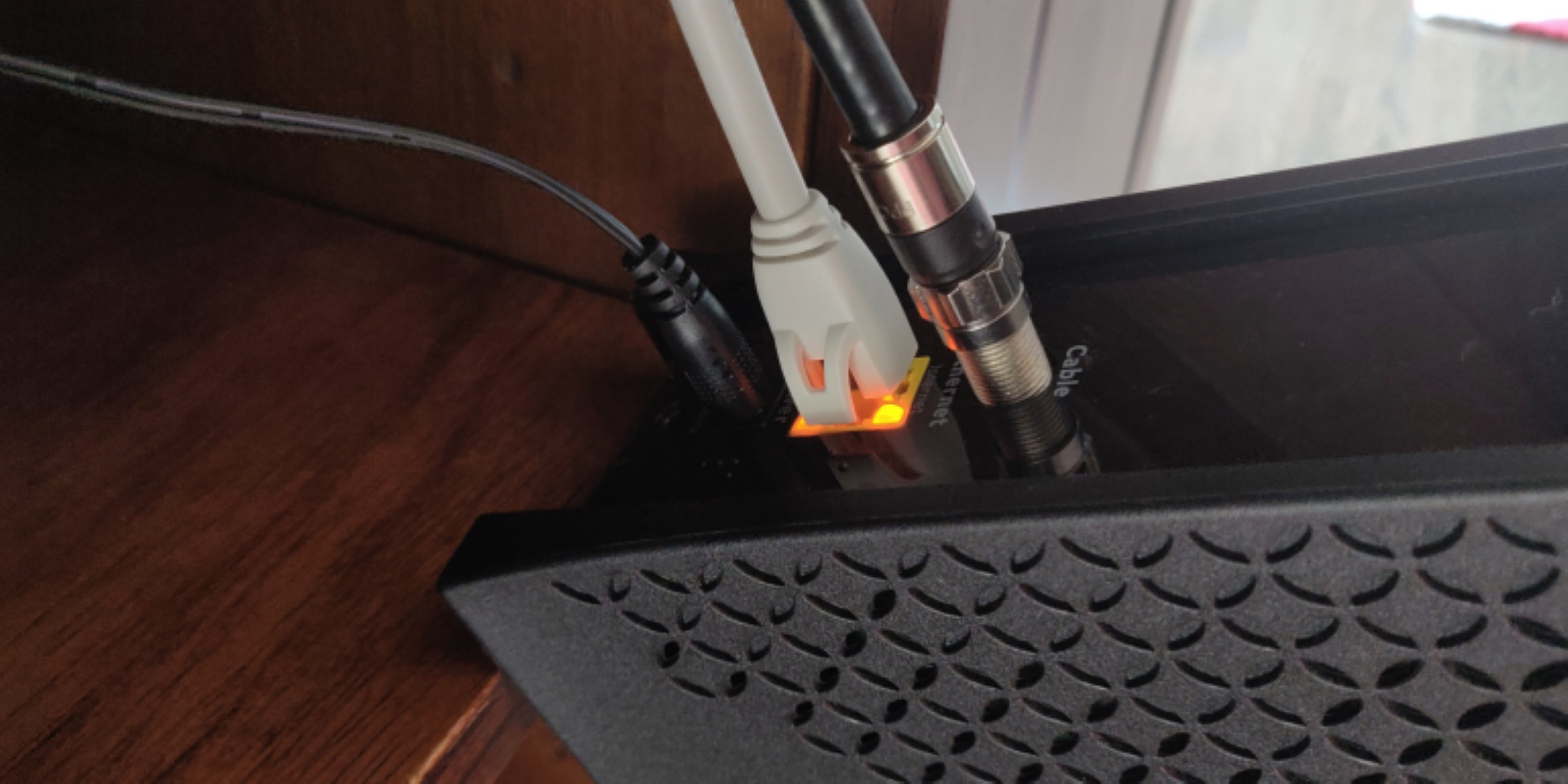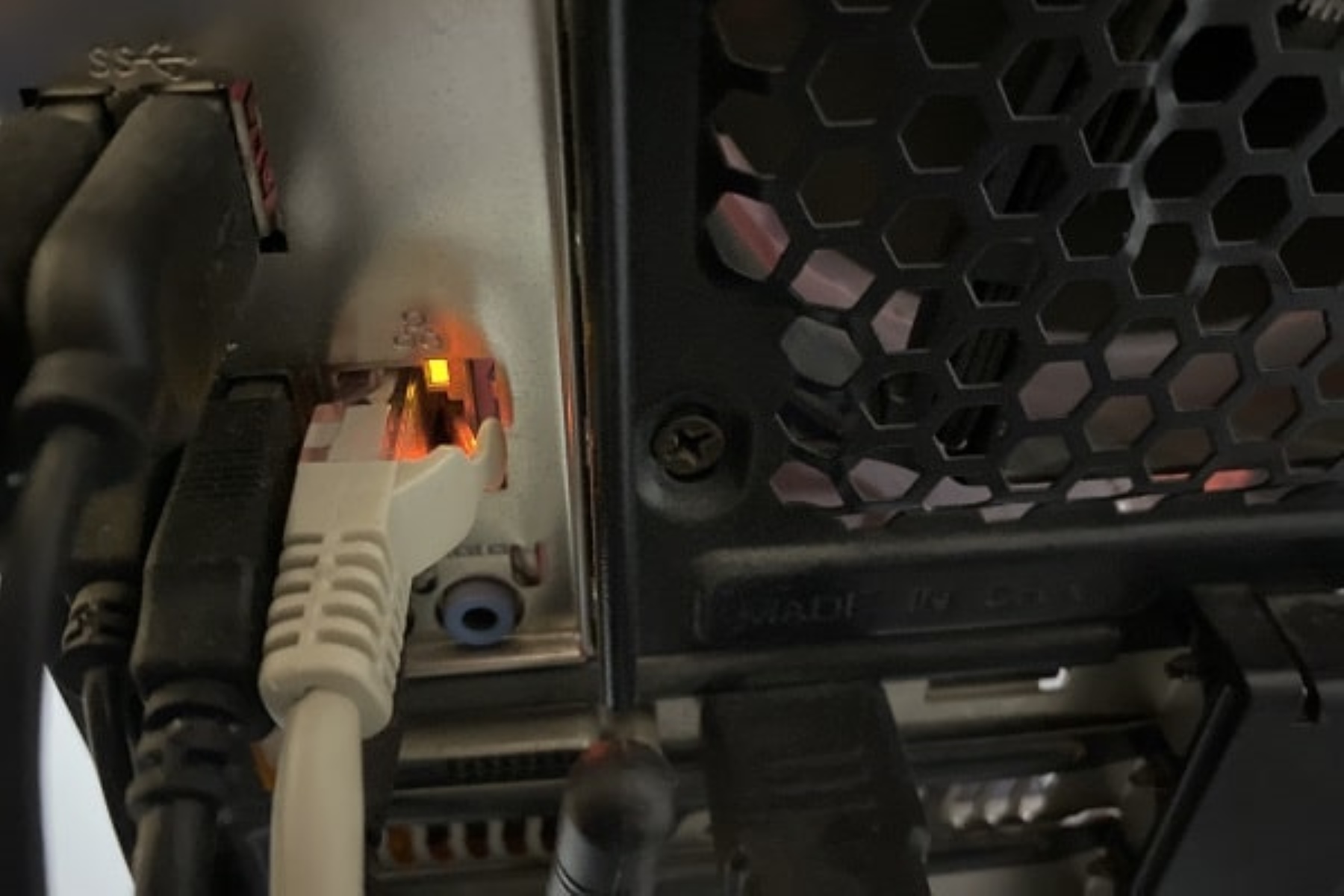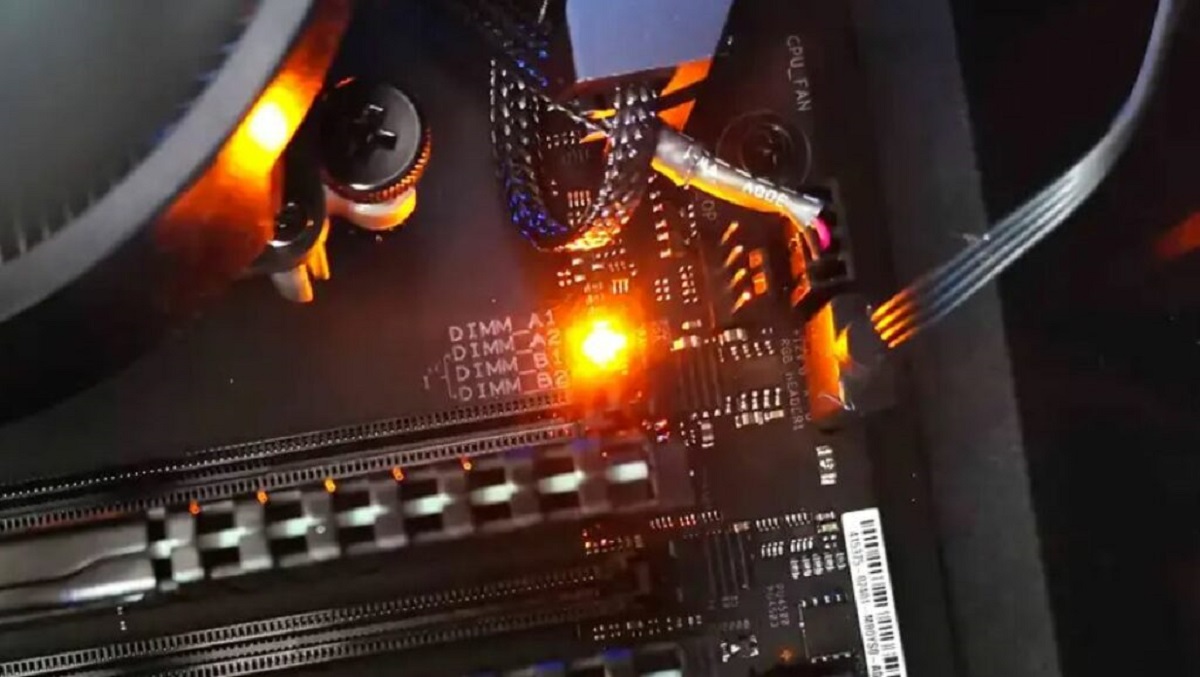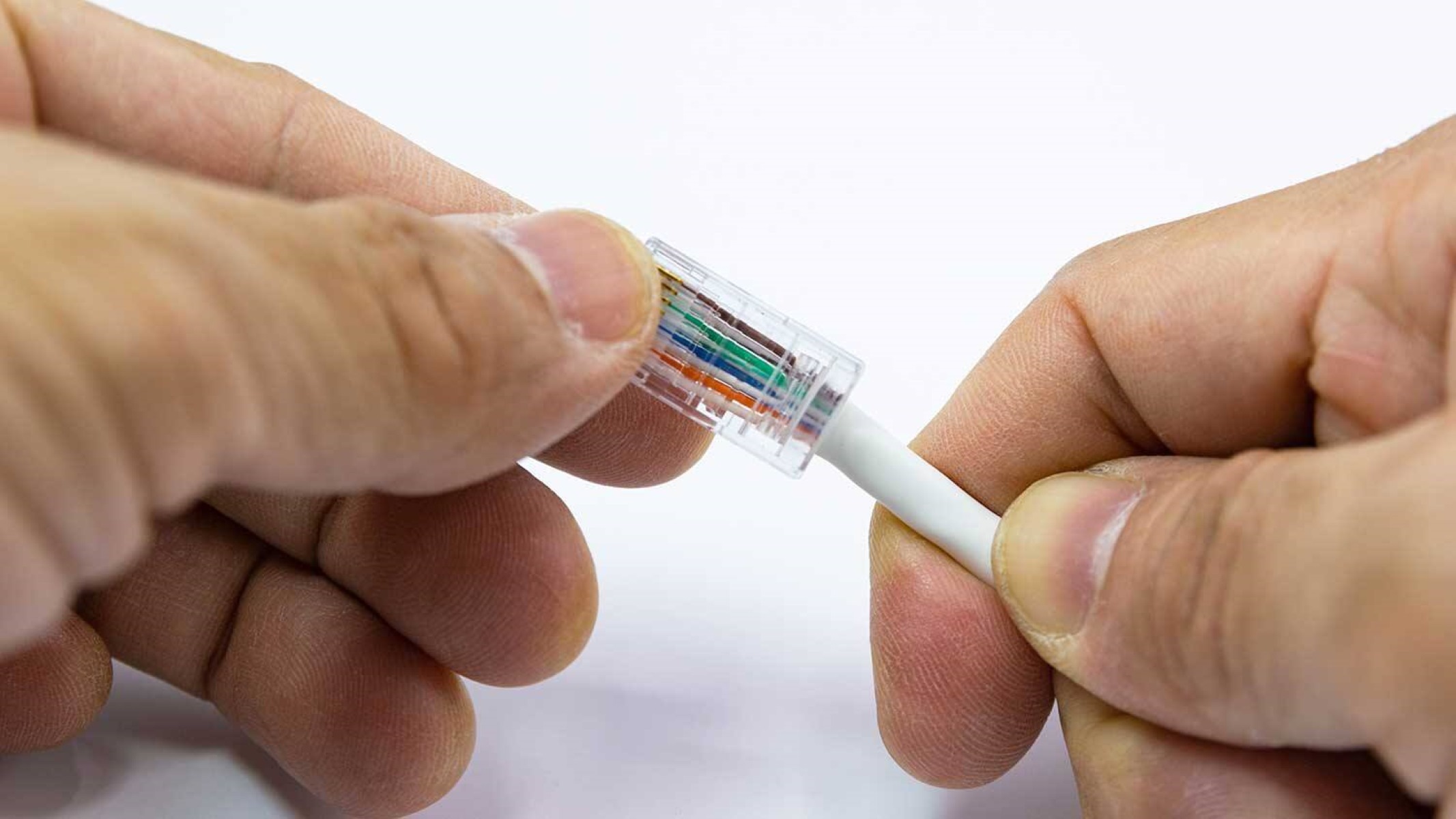Introduction
When restarting your computer, have you ever noticed the network switch's indicator light turning orange? It's a common occurrence that can leave many users puzzled. In this article, we'll delve into the reasons behind this phenomenon and explore potential troubleshooting steps to address it.
The network switch plays a crucial role in connecting multiple devices within a network. Its indicator lights provide valuable insights into the status of the network connection. Typically, a green light indicates a successful connection, while an orange light may signal an issue that requires attention.
Understanding the significance of these indicator lights can help users identify and resolve network connectivity issues effectively. By gaining insights into the possible reasons for the network switch turning orange when restarting a computer, users can take proactive measures to ensure seamless network performance.
In the following sections, we'll explore the functions of network switch indicator lights, delve into potential reasons for the orange light during computer restarts, and provide troubleshooting steps to address this issue. Let's embark on this journey to unravel the mysteries behind network switch indicator lights and empower ourselves with the knowledge to troubleshoot common network connectivity issues.
Understanding the Network Switch Indicator Lights
Network switches are equipped with indicator lights that convey vital information about the status of network connections. These indicator lights serve as visual cues, offering insights into the network’s performance and connectivity. Understanding the meaning of these indicator lights is essential for effectively diagnosing network issues and ensuring smooth operations.
The most common colors used for network switch indicator lights are green, orange, and occasionally, amber. Each color signifies a specific status or condition of the network connection. A green light typically indicates a successful and stable connection, signifying that data packets are being transmitted without issues. On the other hand, an orange or amber light often indicates a potential problem that requires attention.
When the network switch’s indicator light turns orange, it may indicate various conditions, such as a connectivity issue, network congestion, or a hardware malfunction. Additionally, the blinking or steady nature of the orange light can provide further clues about the nature of the problem. For instance, a steady orange light may indicate a persistent issue, while a blinking orange light could signal intermittent connectivity problems.
Furthermore, the position of the orange light on the network switch can also convey specific information. For instance, if the orange light is associated with a specific port on the switch, it may indicate a problem with the connected device or the network cable. Understanding these nuances can aid in pinpointing the root cause of the connectivity issue.
By familiarizing themselves with the functions and meanings of the network switch indicator lights, users can gain valuable insights into the status of their network connections. This knowledge empowers users to identify and address potential network issues promptly, ensuring optimal performance and reliability.
Possible Reasons for Orange Light When Restarting Computer
When restarting a computer, observing the network switch’s indicator light turning orange can be perplexing. Several factors can contribute to this occurrence, potentially indicating underlying issues within the network infrastructure. Understanding these possible reasons can shed light on the root causes of the orange light, enabling users to take informed steps to address the issue.
One common reason for the network switch’s indicator light turning orange during a computer restart is network congestion. As the computer re-establishes its connection with the network, increased data traffic may lead to congestion, causing the switch’s indicator light to transition to an orange hue. This congestion can stem from various sources, such as multiple devices simultaneously attempting to access the network or heavy data transfers during the restart process.
Another potential cause of the orange light is a network protocol mismatch. When the computer restarts, it initiates communication with the network switch using specific protocols. Incompatibility or mismatch in these protocols can lead to communication errors, triggering the network switch’s indicator light to turn orange. This scenario often necessitates adjustments to the network settings to ensure protocol alignment and seamless communication between the computer and the network switch.
Hardware issues, such as faulty network cables or damaged ports on the network switch, can also manifest as an orange indicator light during computer restarts. If the network switch detects irregularities in the physical connections, it may display an orange light to alert users to potential hardware-related issues. Inspecting and, if necessary, replacing network cables and examining the switch’s ports can help rectify these hardware-related concerns.
Additionally, software-related factors, including outdated network drivers or configuration errors, can contribute to the network switch displaying an orange indicator light during computer restarts. Outdated or incompatible network drivers may disrupt the communication between the computer and the network switch, leading to connectivity issues that manifest as the orange indicator light.
By recognizing these potential reasons for the network switch’s indicator light turning orange during computer restarts, users can proactively address network congestion, protocol mismatches, hardware issues, and software-related concerns. This understanding equips users with the knowledge to troubleshoot and resolve network connectivity issues effectively, ensuring a reliable and stable network environment.
Troubleshooting Steps
When encountering an orange indicator light on the network switch during computer restarts, it’s essential to undertake systematic troubleshooting steps to identify and resolve the underlying issues. By following these proactive measures, users can effectively diagnose and address network connectivity issues, restoring seamless communication between their devices and the network switch.
- Check Network Congestion: Begin by assessing network congestion during the computer restart. If multiple devices are concurrently accessing the network or data-intensive processes are underway, the resulting congestion may trigger the network switch’s indicator light to turn orange. Minimizing concurrent network activities or optimizing data transfer processes can alleviate this congestion, restoring the indicator light to its normal state.
- Verify Network Protocol Compatibility: Confirm that the network protocols used by the computer and the network switch are compatible. Ensuring protocol alignment is crucial for seamless communication. Adjusting the network settings to match the required protocols can mitigate communication errors, potentially resolving the orange indicator light issue.
- Inspect Hardware Connections: Thoroughly examine the network cables and ports to identify any physical issues that may be causing the orange indicator light. Replace damaged or faulty network cables and ensure secure connections between the computer and the network switch. Additionally, inspect the switch’s ports for any signs of damage or irregularities that may affect connectivity.
- Update Network Drivers: Check for and install any available updates for the network drivers on the computer. Outdated or incompatible drivers can disrupt the network communication, leading to the network switch displaying an orange indicator light. Updating the drivers to the latest versions can rectify potential software-related issues.
- Restart Network Devices: Perform a sequential restart of the network devices, including the computer and the network switch. This process can help reset network configurations and clear any temporary issues that may be contributing to the orange indicator light. After the restart, monitor the indicator light to observe if the issue has been resolved.
By systematically executing these troubleshooting steps, users can effectively address network congestion, protocol mismatches, hardware-related issues, and software concerns that may lead to the network switch’s indicator light turning orange during computer restarts. These proactive measures empower users to maintain a robust and reliable network environment, ensuring uninterrupted connectivity and optimal performance.
Conclusion
Understanding the behavior of network switch indicator lights, particularly when they turn orange during computer restarts, is crucial for maintaining a stable and efficient network environment. By comprehending the potential reasons behind this occurrence and implementing targeted troubleshooting steps, users can effectively address network connectivity issues, ensuring seamless communication between their devices and the network switch.
Network congestion, protocol mismatches, hardware irregularities, and software-related factors can all contribute to the network switch displaying an orange indicator light during computer restarts. By recognizing these potential causes, users can proactively take steps to mitigate these issues, fostering an environment of reliable network connectivity.
Systematically troubleshooting network congestion, verifying protocol compatibility, inspecting hardware connections, updating network drivers, and performing sequential restarts of network devices are proactive measures that empower users to address the root causes of the orange indicator light. These steps enable users to diagnose and resolve network connectivity issues effectively, fostering a robust and stable network environment.
Empowered with the knowledge gained from understanding network switch indicator lights and the associated troubleshooting steps, users can navigate network connectivity challenges with confidence. By proactively addressing potential issues, users can ensure that their network infrastructure operates seamlessly, facilitating efficient data transmission and communication between devices.
Ultimately, by delving into the intricacies of network switch indicator lights and their behavior during computer restarts, users can enhance their ability to maintain a reliable and resilient network environment, promoting productivity and seamless connectivity across their network infrastructure.

























